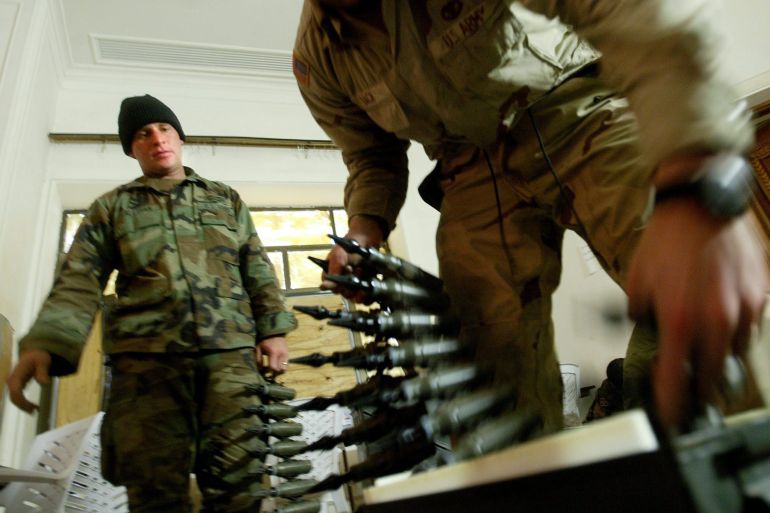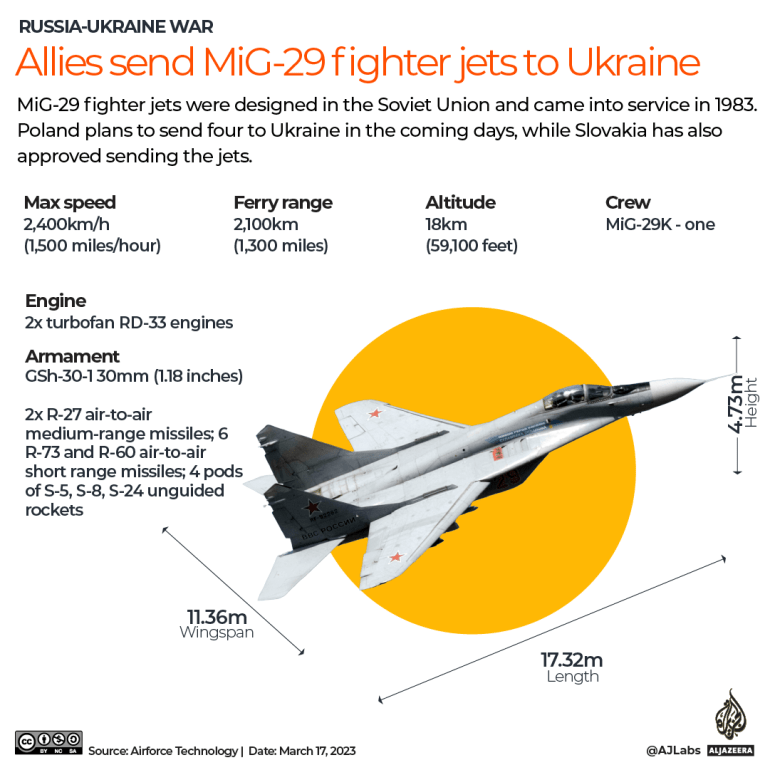What are depleted uranium munitions the UK is sending to Ukraine?
While depleted uranium ammunition is not considered nuclear weapons, their emission of low levels of radiation has led IAEA to warn of possible dangers of exposure.

The British government has announced it will provide Ukraine with armour-piercing rounds containing depleted uranium – a byproduct of the uranium-enrichment process needed to create nuclear weapons.
President Vladimir Putin warned Russia would “respond accordingly given that the collective West is starting to use weapons with a ‘nuclear component'”.
Keep reading
list of 4 itemsUkraine will ‘respond to every blow’ after deadly Russian attacks
Russia-Ukraine war: List of key events, day 393
ICC concerned by Russia’s ‘threats’ over Putin warrant
The rounds retain some radioactive properties, but they cannot generate a nuclear reaction like a nuclear weapon would, Edward Geist, a nuclear expert at research organisation RAND says. But the ammunition does carry risks even if it is not a nuclear weapon.
Here is a look at depleted uranium munitions:
What is depleted uranium?
Depleted uranium is a byproduct of the process to create the rarer, enriched uranium used in nuclear fuel and weapons. Although far less powerful than enriched uranium and incapable of generating a nuclear reaction, depleted uranium is extremely dense – more dense than lead – a quality that makes it highly attractive as a projectile.
“It’s so dense and it’s got so much momentum that it just keeps going through the armour – and it heats it up so much that it catches on fire,” Geist said.
When fired, a depleted uranium munition becomes “essentially an exotic metal dart fired at an extraordinarily high speed”, RAND senior defence analyst Scott Boston said.
In the 1970s, the US Army began making armour-piercing rounds with depleted uranium and has since added it to composite tank armour to strengthen it. It has also added depleted uranium to the munitions fired by the air force’s A-10 close air support attack plane, known as “the tank killer”.
What has Russia said?
The British “have lost their bearings”, said Russian Foreign Minister Sergey Lavrov, warning the munitions are “a step toward accelerating escalation”.
Defence Minister Sergei Shoigu said the announcement was “another step, and there aren’t so many of them left”.
Putin warned Russia would be “forced to react” if the United Kingdom provides Ukraine with the ammunition, without elaborating.

What is the US saying?
The ammunition, which enhances the ability to overcome defences on tanks, “is not radioactive” and “not anywhere close to going into” the sphere of nuclear weaponry, White House National Security Council spokesman John Kirby said.
“This is a commonplace type of munition … If Russia is particularly concerned about the welfare of their tanks and their tank soldiers … they could just take them across the border back into Russia,” he said. “I think what’s really going on here is Russia just doesn’t want Ukraine to continue to take out its tanks.”
Not a bomb – but still a risk
The United Nations Environment Programme has described such ammunition as “chemically and radiologically toxic heavy metal”.
While depleted uranium munitions are not considered nuclear weapons, their emission of low levels of radiation has led the UN nuclear watchdog to urge caution when handling and warn of the possible dangers of exposure.
The handling of such ammunition “should be kept to a minimum and protective apparel [gloves] should be worn”, the International Atomic Energy Agency (IAEA) cautions, adding “a public information campaign may, therefore, be required to ensure that people avoid handling the projectiles”.
“This should form part of any risk assessment and such precautions should depend on the scope and number of ammunitions used in an area.”
The IAEA notes that depleted uranium is mainly a toxic chemical as opposed to a radiation hazard. Particles in aerosols can be inhaled or ingested, and while most would be excreted again, some can enter the bloodstream and cause kidney damage.
“High concentrations in the kidney can cause damage and, in extreme cases, renal failure,” the IAEA says.
Where has the ammunition been fired?
Depleted uranium munitions were used in the 1991 Gulf War against Iraq’s T-72 tanks and again in the invasion of the country in 2003, as well as in Serbia and in Kosovo. US military veterans of those conflicts have questioned whether their use led to ailments they now face.
Vyacheslav Volodin, speaker of the Russian parliament’s lower house, said rounds containing depleted uranium could lead to “a tragedy on a global scale that will primarily affect European countries”.
Volodin said the use of such US ammunition in the former Yugoslavia and Iraq led to “radioactive contamination and a sharp rise in oncological diseases”.